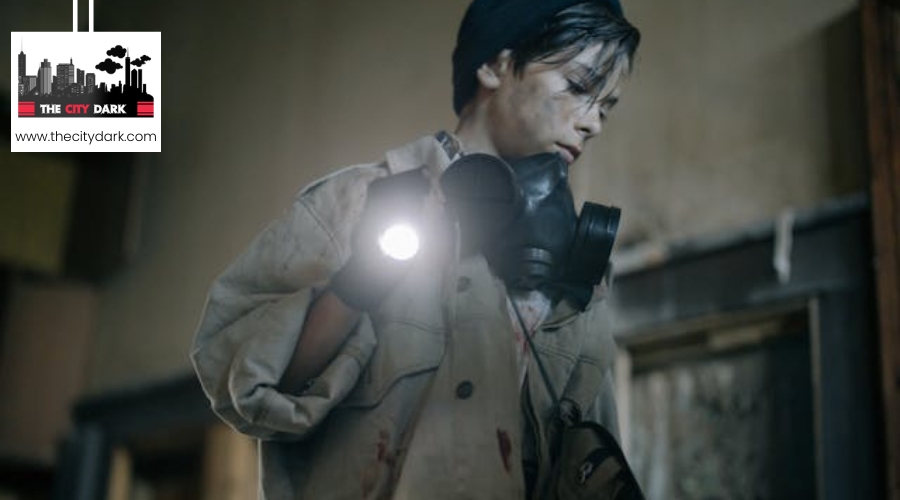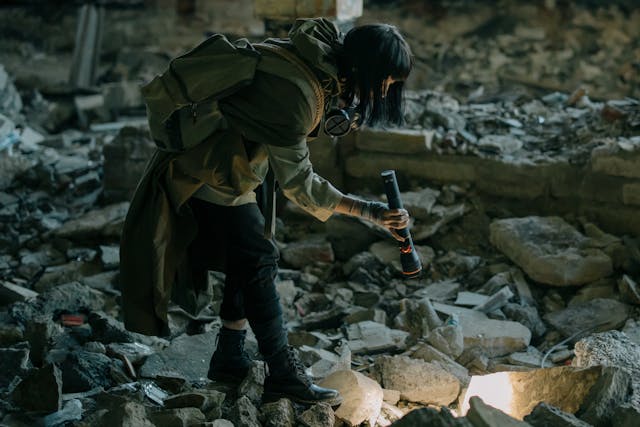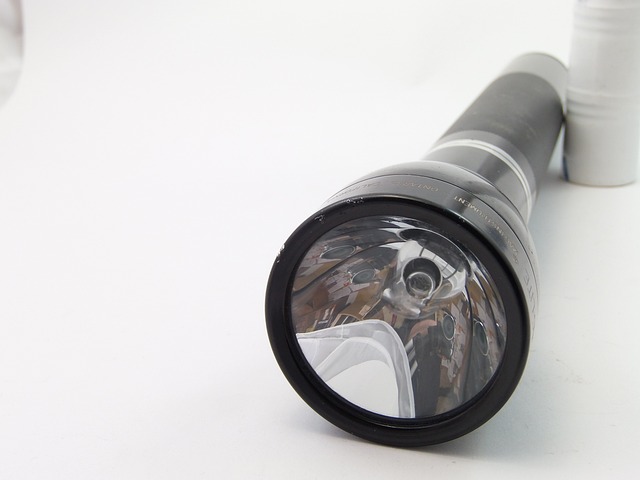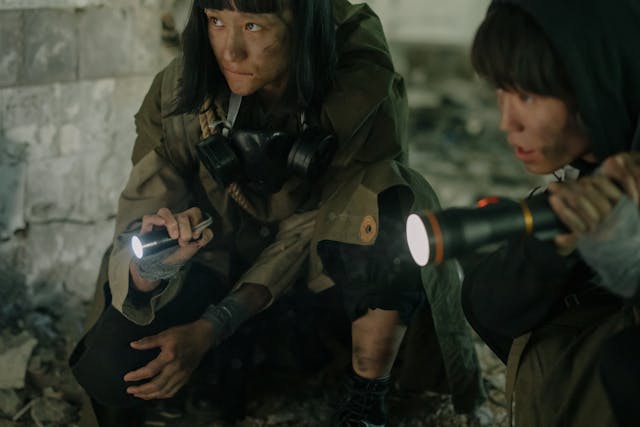In the shadows of an urban landscape, your flashlight isn’t just a tool; it’s your lifeline. When you’re navigating through areas littered with debris and potential hazards, knowing how to wield this beam of light effectively becomes paramount.
You’ll need to choose a flashlight that doesn’t just pierce the darkness but also endures the rough and tumble of urban exploration. It’s about understanding how the right beam can reveal hidden dangers and how to manage your battery life to ensure you’re never left in the dark.
From spotting sharp objects and uneven ground to signaling for help in emergencies, the techniques you employ can mean the difference between safety and misfortune. So, before you step out into the night’s embrace, let’s shine a light on some essential tips that could safeguard your journey through the urban wilderness.
Stick around, and you’ll discover how to turn your flashlight from a simple beam into a survival tool.
Key Takeaways
- Choose a flashlight with a high lumen output for brightness and a wide beam angle for better visibility in urban debris situations.
- Consider using a flashlight with adjustable beams to switch between spot and flood lighting, depending on the specific environment.
- Practice effective navigational light techniques, such as setting the flashlight to a high brightness level, adjusting the light angle frequently, and strategically scanning the area ahead to identify and avoid hazards.
- Optimize battery life and management by monitoring flashlight use, using low-power settings, and having spare batteries or rechargeable ones available.
Choosing the Right Flashlight
When navigating urban debris and hazards, selecting the right flashlight is crucial for ensuring your safety and effectiveness. Understanding lumens and lux is key to picking a flashlight that’ll light up your path without blinding you or missing hidden dangers.
Lumens measure the total amount of visible light from a source, essentially telling you how bright the flashlight can get. Lux, on the other hand, focuses on the intensity of light that hits a surface, vital for knowing how well a particular area will be illuminated.
Comparing different flashlight brands is also essential. For instance, Pelican Products flashlights stand out for their combination of high brightness levels and safety. They’re designed to meet necessary safety standards and certifications, ensuring they’re intrinsically safe for various environments. Plus, they come with a lifetime warranty, which is a testament to their durability and reliability.
Choosing a flashlight isn’t just about picking the brightest one. It’s about finding a light that’s safe for your specific environment, whether you’re navigating through dark alleys or exploring abandoned buildings. With the right knowledge on lumens and lux and by comparing brands like Pelican, you’ll be equipped to make an informed decision.
Understanding Beam Types
- An adjustable beam allows you to choose between a spot or flood beam, depending on the situation. This versatility is particularly useful when you need to switch between focused and wide illumination quickly.
- By adjusting the beam angle, you can customize the spread of light to match your specific needs. This feature is valuable when you’re navigating tight spaces or need to direct light towards a specific area.
- The ability to adapt to changing environments is crucial in urban debris situations, where conditions can shift rapidly. An adjustable beam ensures that you can easily modify your flashlight’s light output to meet the demands of the environment.
- Whether you’re searching for survivors, assessing structural damage, or simply moving through cluttered areas, having a flashlight with an adjustable beam gives you the flexibility to handle any task effectively.
- Understanding the different beam types and their applications empowers you to make informed decisions when choosing a flashlight for urban exploration. By selecting a flashlight with spot, flood, or adjustable beams, you can enhance your safety, improve your efficiency, and navigate urban debris and hazards with confidence.
Navigational Light Techniques
Understanding different beam types equips you with the knowledge to choose the right light; now, let’s focus on how to apply these choices through effective navigational light techniques.
When navigating urban debris and hazards, the way you use your flashlight can significantly impact your safety and efficiency. Employing efficiency techniques such as light angle adjustment is crucial in these scenarios.
First off, always ensure your flashlight is set to a high brightness level. This maximizes visibility, allowing you to spot potential dangers from a distance. However, bright light can cast deep shadows, obscuring hazards. To mitigate this, adjust the light angle frequently. Aiming your flashlight at different angles helps reveal hidden obstacles, providing a more comprehensive view of the terrain.
Moreover, when moving through tightly confined spaces, use your flashlight to scan the area ahead before you step in. This preemptive check minimizes the risk of stumbling over unseen debris. Remember, the goal isn’t just to illuminate your path but to strategically use light to identify and avoid hazards effectively.
Battery Life and Management
When you’re navigating through urban debris, managing your flashlight’s battery life is crucial. You’ll want to learn how to extend its endurance and use it efficiently to avoid being left in the dark.
Let’s explore strategies for maximizing battery performance and ensuring your light stays on when you need it most.
Extending Battery Endurance
Maximizing your flashlight’s battery life is crucial, especially when navigating through urban debris and hazards. Employing battery-saving techniques not only ensures you’re not left in the dark but also aids in maximizing battery performance. Here’s what you need to know:
- Monitor your flashlight’s use, turning it off when it’s not necessary to avoid unnecessary battery drain.
- Opt for low-power settings to conserve energy without compromising visibility.
- Always have spare batteries ready or consider rechargeable ones to save costs and reduce waste.
Efficient Usage Strategies
To ensure your flashlight remains a reliable tool in hazardous urban environments, it’s crucial to adopt efficient usage strategies that focus on battery life and management.
- Opt for energy-efficient LED flashlights to maximize battery life, reducing the need for frequent replacements.
- Always turn off your flashlight when it’s not in use to conserve power and extend its lifespan.
- Regular checks and timely battery replacements are vital to maintain optimal performance and prevent unexpected power loss.
- Don’t get caught in the dark; carry spare batteries or a portable charger for emergencies.
- Additionally, make the most of your flashlight’s adjustable brightness to save battery power and adapt to varying lighting needs, ensuring you’re never left stranded in challenging urban terrains.
Identifying Hazards With Light
Utilizing a bright flashlight, you can effectively illuminate and identify potential hazards in dark or dimly lit areas, ensuring your safety. In urban environments, where unexpected debris and dangers lurk, mastering flashlight techniques is crucial for urban safety. By casting a wide beam across your path, you can reveal hidden dangers that might otherwise go unnoticed in shadows or the dark of night.
- Structural Damage: Use your light to spot cracks or shifts in buildings and surfaces that may indicate instability.
- Electrical Hazards: Flashlight beams can expose wires or electrical equipment that could pose a risk, especially in waterlogged or damaged areas.
- Trip Hazards: Debris, unexpected obstacles, or slippery surfaces are easily spotted with a well-aimed flashlight, preventing falls or injuries.
Pay close attention to the quality of the light your flashlight emits. A brighter, more focused beam can make all the difference in spotting hazards before they become a problem. By adopting these flashlight techniques, you’ll enhance your ability to navigate through urban settings safely, keeping potential hazards at bay with the power of light.
Emergency Signaling Methods
After mastering how to identify hazards with your flashlight, it’s crucial to learn how you can use it to signal for help in emergencies. Your flashlight isn’t just a tool for visibility; it’s a lifeline for communication, especially when you’re stuck in urban debris or facing hazards that limit your mobility.
To attract attention, shine your flashlight in a repeated pattern. This method is simple but effective in catching the eye of rescuers or passersby who might be able to offer assistance.
For more specific emergency distress signals, you can utilize Morse code communication. This requires flashing your light in a sequence that represents letters and numbers, allowing you to convey detailed messages.
The most recognized Morse code signal is the SOS distress signal, which consists of three short, three long, and three short bursts. It’s universally understood as a plea for help and can be your go-to signal in dire situations.
Additionally, if you find yourself in a scenario where aircraft are nearby, use your flashlight to shine in their direction. This can significantly increase your chances of being spotted and rescued.
Maintenance and Care Tips
Keeping your flashlight in top condition means you’re always prepared to navigate through urban debris and hazards. You’ll want to optimize battery life, ensure it’s clean, and employ strategies to prevent damage.
These simple maintenance steps can significantly extend the life and functionality of your flashlight, making it a reliable tool in any situation.
Battery Life Optimization
To ensure your flashlight remains reliable during urban explorations, it’s crucial to optimize battery life through regular maintenance and care. Flashlight battery maintenance isn’t just about keeping it powered; it’s about prolonging battery lifespan to ensure you’re never left in the dark amidst urban debris and hazards.
Here are a few tips to help you along:
- Regularly clean the contacts of the flashlight and batteries.
- Store batteries separately from the flashlight.
- Remove batteries if the flashlight won’t be used for a while.
These steps prevent accidental drain, corrosion, and ensure a good connection between your flashlight and its power source. Additionally, investing in high-quality rechargeable batteries and avoiding extreme temperatures can significantly extend the life and performance of your flashlight batteries.
Cleaning Your Flashlight
Having optimized your flashlight’s battery life, it’s now crucial to focus on its cleanliness and overall maintenance to ensure peak performance amidst urban explorations.
Regular cleaning of the exterior is essential to remove dirt and debris. Utilize soft, dry cloths for wiping the lens, ensuring it’s free of smudges and fingerprints. If you encounter stubborn stains, gentle cleaning techniques with a slightly damp cloth can be effective.
Regularly check the battery compartment for corrosion signs, cleaning as necessary. Inspect and clean or replace O-rings and seals to maintain water resistance.
Always store your flashlight in a dry, cool place to prevent damage and corrosion. Following these maintenance tips will keep your flashlight ready for any urban adventure.
Damage Prevention Strategies
Regular inspections and maintenance of your flashlight are crucial for ensuring it’s always ready for use. Preventing corrosion and other damage starts with a proactive approach. Here’s a simple inspection checklist to follow:
- Clean the lens and batteries to prevent obstruction and corrosion.
- Store your flashlight in a cool, dry place to avoid damage.
- Replace worn-out or damaged parts promptly.
Conclusion
In conclusion, when you’re navigating through urban debris and hazards, picking the right flashlight and understanding how to use it effectively can make all the difference.
Always ensure it’s got a bright beam, know your light techniques, and keep an eye on battery life. Use your light to spot dangers and signal for help if needed.
Don’t forget regular maintenance to keep it in top shape. By following these tips, you’ll be better prepared to safely tackle any obstacles in your path.





